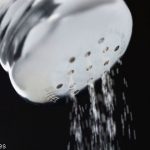The study found that the circulating Tfh-like cells were expanded in the blood of SLE patients compared with controls, as noted by the high levels of CXCR5, inducible T cell costimulator (ICOS) and programmed death 1 (PD-1) protein found in the SLE patients. Research has shown that expression of CXCR5, ICOS and PD-1 are markers of circulating Tfh-like cells. Compared with controls, expression of PD-1 was significantly elevated in circulating Tfh-like cells in the patients with SLE and PD-1 expression among patients with high CXCR5 circulating Tfh-like cells correlated with SLEDAI, frequency of circulating plasmablasts and anti-double-stranded-DNA antibody positivity. No relationship was found with duration of disease or past organ injury.
This study, said Dr. Craft, showed that Tfh-like cells are correlated with disease activity and aberrant B cell function in patients with SLE.
New Therapies?
According to Dr. Craft, this type of research will help us better understand the function and role of Tfh cells in autoimmune diseases and help identify what, ultimately, is the goal of this research—better treatment.
“By understanding these events, we better utilize current, or develop new, therapies that block their provision of pathogenic B cell help in the rheumatic disease,” he said, ending with a final question left for ongoing and future research to answer.
“Are therapies that block Tfh–B cell interactions in SLE, and other rheumatic disease, clinically effective, and if so, does therapeutic efficacy correlate with Tfh-cell or circulating B cell numbers and function?” he asked.
Mary Beth Nierengarten is a freelance medical journalist based in St. Paul, Minn.
Second Chance
If you missed this session, it’s not too late. Catch it on SessionSelect
http://acrannualmeeting.org/resources/sessionselect
References
- Craft JE. Follicular helper T cells in immunity and systemic autoimmunity. Nat Rev Rheumatol. 2012 May 1;8(6):337–347.
- Choi JY, Ho JH, Pasoto SG, et al. Circulating follicular helper-like T cells in systemic lupus erthematosus: Association with disease activity. Arthritis Rheumatol. 2015 Apr;67(4):988–999.

